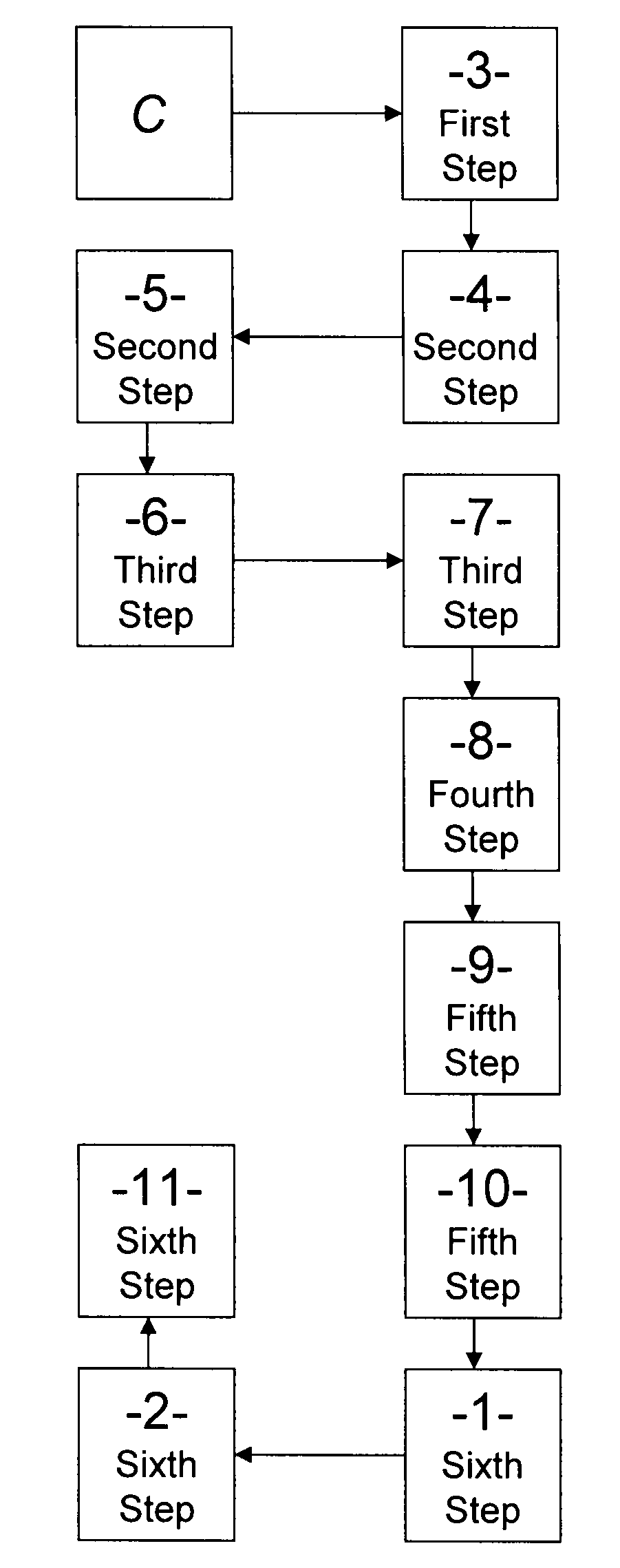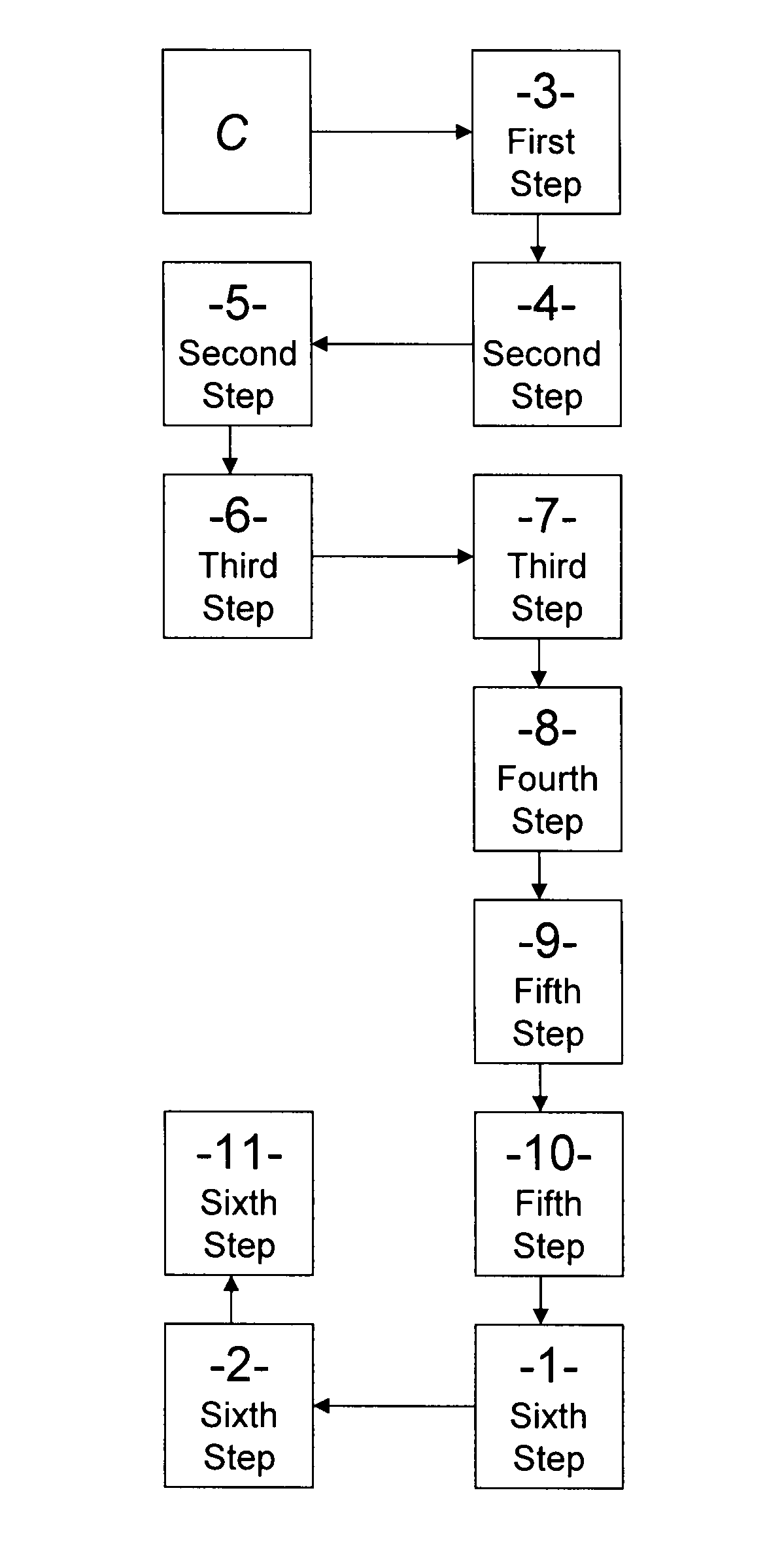Prepress procedure of exclusive four-color reproduction with enhanced gamut for rotogravure and special inks, color chart and software used
a technology of rotogravure and enhanced gamut, applied in the field of prepress procedure of exclusive four-color reproduction with enhanced gamut for rotogravure and special inks, color chart and software used, to achieve the effect of saving cylinders, more vivid colors, and improving color reproduction accuracy
- Summary
- Abstract
- Description
- Claims
- Application Information
AI Technical Summary
Benefits of technology
Problems solved by technology
Method used
Image
Examples
Embodiment Construction
)
[0007]In the FIGURE previously described, the same characters of reference indicate equal or corresponding parts. The number (1) corresponds to an engraving image, the number (2) a printing cylinder or matrix, the number (3) a technical department and the number (4) a photochrome. The reference number (5) corresponds to a flat color of reference, the number (6) a color chart, the number (7) a contractual test of color, and the number (8) a digital correction of the color. The reference number (9) corresponds to a manual retouching, the number (10) a final image, the number (11) an adequate medium, and the letter (c) a client. Basically the procedure of the present invention is composed of several stages. The first stage consists in the reception of the client's information and its technical analysis. The second stage is the preparation of photochromes and flat colors on the basis of the “Pantone” scale. The third stage is the digital treatment of the photochromes and other colors o...
PUM
 Login to View More
Login to View More Abstract
Description
Claims
Application Information
 Login to View More
Login to View More - R&D
- Intellectual Property
- Life Sciences
- Materials
- Tech Scout
- Unparalleled Data Quality
- Higher Quality Content
- 60% Fewer Hallucinations
Browse by: Latest US Patents, China's latest patents, Technical Efficacy Thesaurus, Application Domain, Technology Topic, Popular Technical Reports.
© 2025 PatSnap. All rights reserved.Legal|Privacy policy|Modern Slavery Act Transparency Statement|Sitemap|About US| Contact US: help@patsnap.com


